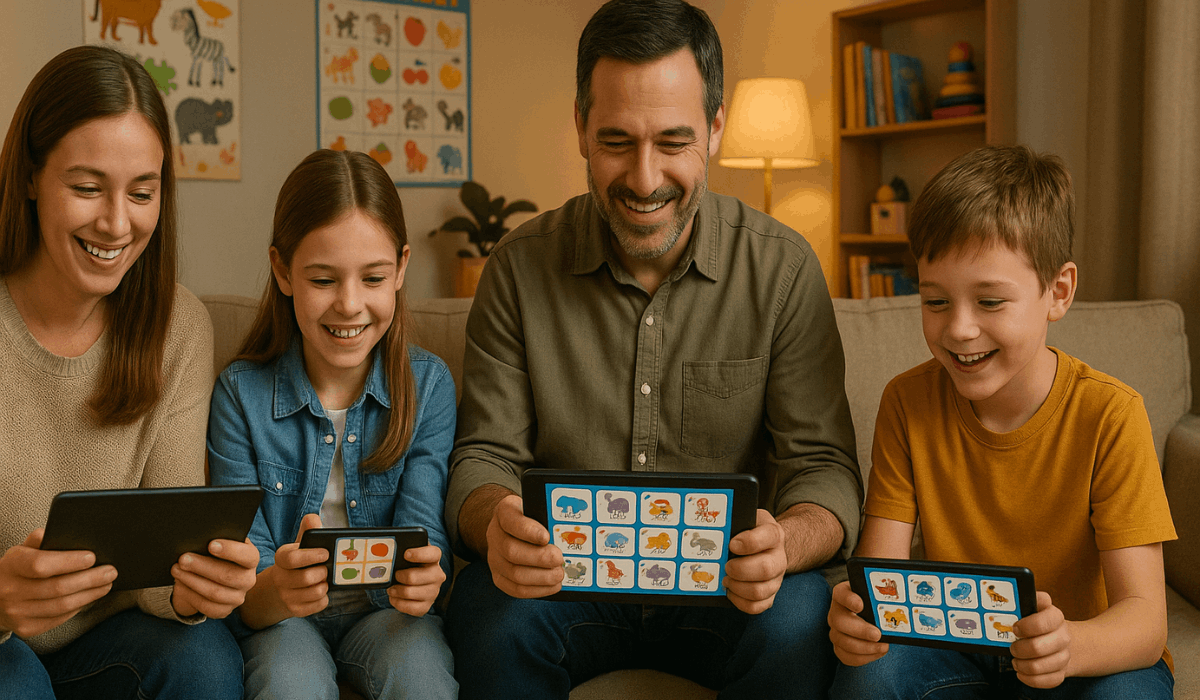Interactive games are transforming the way children learn by combining fun with education.
These games promote engagement, creativity, and critical thinking through hands-on digital experiences.
This article explores how interactive play can enhance learning and help parents choose the right tools for their child’s development.
The Power of Play in Child Development
Play is more than just a way to pass time—it’s a crucial part of how children grow and learn.
Interactive games harness this natural learning method to build foundational skills engagingly.
- Boosts Brain Development: Play strengthens neural connections, especially in early childhood, helping kids process information more efficiently.
- Encourages Curiosity and Exploration: Games invite children to ask questions, try new things, and discover how the world works.
- Builds Confidence and Independence: Completing game levels or solving puzzles teaches children they can overcome challenges on their own.
- Reinforces Learning Through Repetition: Replaying levels and practicing tasks helps reinforce academic and life skills.
- Improves Communication Skills: Games use narration and dialogue to build vocabulary and understanding.
- Supports Emotional Control: Kids learn patience and manage frustration through goal-based play.
Understanding Interactive Games
Interactive games are more than digital entertainment—they engage children in thinking, reacting, and solving problems.
These games promote active participation, making learning more effective and enjoyable.
- Real-Time Feedback: Players get instant responses to their actions, helping them learn from mistakes.
- Decision-Making Opportunities: Games let kids make choices that impact outcomes, teaching consequences.
- Hands-On Participation: Children stay involved by tapping, dragging, building, or solving tasks.
- Challenge and Progression: Levels and rewards keep kids motivated to improve and advance.
- Storytelling Elements: Many games use stories to create emotional connection and deeper learning.
- Adaptability: Good games adjust to a child’s skill level, offering the right balance of fun and challenge.

Types of Educational Games for Kids
Educational games come in many forms, each designed to target different skills and learning styles.
Choosing the right type helps support your child’s growth in fun and meaningful ways.
- Academic Skills Games: Focus on math, reading, science, and language (e.g., Prodigy, Starfall).
- Creative Thinking Games: Encourage drawing, building, and designing (e.g., Toca Life World, Minecraft Education).
- Social-Emotional Games: Teach empathy, cooperation, and emotional awareness (e.g., ClassDojo, Peppy Pals).
- Physical Activity Games: Combine movement with learning through motion controls (e.g., Just Dance Kids, Ring Fit Adventure).
- Puzzle and Logic Games: Strengthen problem-solving and reasoning skills (e.g., Thinkrolls, Lightbot).
- Life Skills Games: Teach time management, budgeting, or responsibility (e.g., My PlayHome, Bamba Apps).
Choosing Games by Age Group
Not all games are suitable for every age.
Selecting age-appropriate games ensures the content matches your child’s learning stage and keeps them both safe and engaged.
- Toddlers (Ages 2–4): Look for simple games with colors, shapes, and sounds; focus on touch-and-learn interaction.
- Preschoolers (Ages 5–7): Choose games that build early math, reading, and logic; add light challenges and instructions.
- Early Elementary (Ages 7–9): Select games with problem-solving, basic strategy, and creative exploration.
- Older Kids (Ages 10–12): Use games with deeper learning, critical thinking, and collaborative tasks.
- Teens (Ages 13+): Opt for educational games that focus on real-world topics, skill-building, or coding.
- All Ages: Always check for safe content, appropriate language, and no aggressive ads or in-app purchases.
Key Benefits of Interactive Learning Games
Interactive learning games offer more than just fun—they support multiple areas of child development.
These benefits make digital play a valuable part of any learning routine.
- Boosts Cognitive Skills: Improves memory, focus, problem-solving, and critical thinking.
- Strengthens Motor Skills: Enhances hand-eye coordination and fine motor control.
- Supports Social Growth: Encourages teamwork, cooperation, and healthy competition.
- Builds Emotional Resilience: Helps kids manage frustration and celebrate progress.
- Enhances Language Development: Expands vocabulary and improves comprehension through stories and instructions.
- Encourages Independence: Teaches self-direction and responsibility through goal setting and rewards.
Where to Find Quality Educational Games
Finding trusted sources for educational games ensures your child engages with safe, meaningful content.
These platforms offer a mix of fun and learning across subjects and age groups.
- Mobile Apps and Tablets: Apps like ABCmouse and Endless Alphabet are great for early learning on the go.
- Educational Websites: Sites like PBS Kids and Coolmath Games offer free games aligned with school subjects.
- Online Learning Portals: Platforms such as Khan Academy Kids and National Geographic Kids provide structured educational content.
- Gaming Consoles: Titles on systems like Nintendo Switch and LeapFrog offer motion-based and interactive learning games.
- School-Based Tools: Many schools use programs like Seesaw and Epic! to reinforce lessons at home.
- Subscription Services: Paid options like Osmo combine physical and digital play for enhanced learning.
Incorporating Offline Play with Digital Learning
Balancing screen time with offline activities helps reinforce what kids learn through interactive games.
Combining both approaches strengthens understanding and supports healthier development.
- Alternate Screen Time with Physical Games: Use board games, puzzles, or toys between digital sessions to encourage movement and critical thinking.
- Reinforce Lessons Through Crafts: Let kids draw characters, build models, or write stories related to the game they played.
- Use Printable Worksheets: Support learning by printing worksheets that match topics from their favorite educational apps.
- Apply Skills in Real Life: Practice counting during shopping or storytelling at bedtime based on what they learned digitally.
- Encourage Outdoor Activities: Play games outside that use similar themes (like nature, exploration, or teamwork).
- Include Related Toys and Board Games: Choose offline games that mirror app subjects like math, science, or vocabulary.
Using Educational Games in Homeschooling
Educational games are powerful tools for homeschool settings, offering interactive ways to reinforce lessons.
They make learning more dynamic and can be tailored to each child’s pace and interests.
- Supplement Core Subjects: Use apps for math, reading, and science to add variety to traditional lessons.
- Align with Curriculum Standards: Choose games that match grade-level goals and academic benchmarks.
- Create Game-Based Review Sessions: Reinforce weekly topics with quizzes, challenges, or educational mini-games.
- Track Progress Easily: Many platforms offer dashboards to monitor learning outcomes and skill development.
- Encourage Peer Interaction: Use multiplayer or classroom-style apps to simulate group learning experiences.
- Motivate Through Rewards: Let kids earn points, badges, or privileges based on their in-game progress.

Tips for Parents: Making the Most of Game-Based Learning
Parents play a key role in turning game time into meaningful learning time. These tips help you guide, monitor, and support your child’s educational play.
- Choose Age-Appropriate Games: Look for games that match your child’s learning level and interests.
- Check Content for Safety: Avoid games with ads, violence, or in-app purchases; prefer educator-approved titles.
- Set Time Limits: Balance screen time with offline activities like reading, outdoor play, or crafts.
- Play Together Sometimes: Co-playing lets you bond, understand the game, and guide your child’s learning.
- Track Progress and Skills: Use game dashboards or ask your child about their achievements and favorite parts.
- Stay Flexible: Not every game will suit your child—explore options until you find what keeps them both engaged and learning.
To Sum Up
Interactive games offer a fun and effective way to support your child’s learning and development.
By choosing the right tools and staying involved, you can turn screen time into meaningful education.
Start exploring quality educational games today and make learning through play part of your child’s daily routine.



